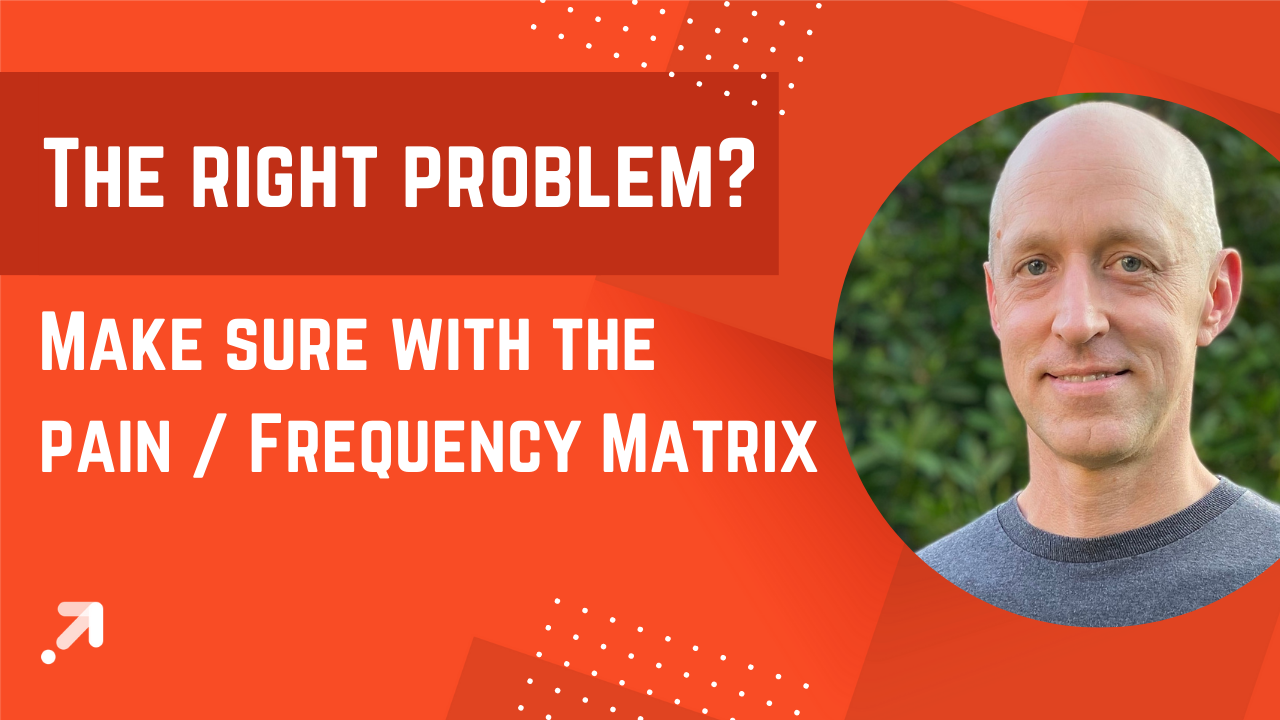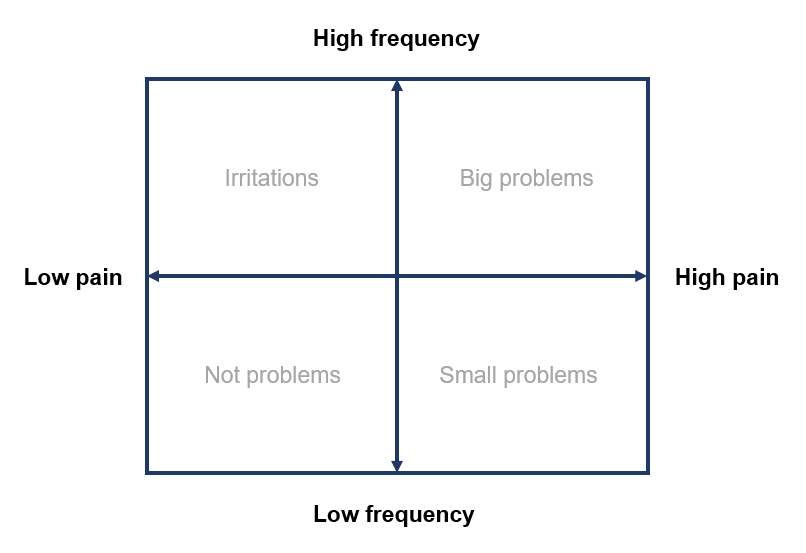
TRC 016: How to ensure your startup is solving the right problem
Aug 17, 2023Read time: 5 mins
It's easy to fall in love with your product idea and to think of it as a solution that the world needs.
However, until and unless you are solving a real-world problem, the road to success becomes exceedingly difficult.
Remember, the key to building a successful startup is not in the product itself, but in the problem it solves.
It pays to take a step back and invest time in problem discovery before jumping into product development.
This can save you valuable time, money, and resources in the long run.
This is where the pain/frequency matrix comes into play:

- Low frequency/low pain problems: These are issues that are neither common nor create a significant amount of inconvenience. They are not perceived as "real" problems by the potential customers and as such, they are likely not worth pursuing as a startup.
- High frequency/low pain problems: These problems are relatively common but do not create a significant inconvenience. Although they are irritants, customers may not feel the need to pay for a solution since the pain they cause is relatively low.
- Low frequency/high pain problems: These are problems that occur infrequently but can be frustrating and costly when they do occur. These problems may represent good opportunities for startups, but because they don't happen often, the customer base might not be large enough to sustain a business.
- High frequency/high pain problems: These are the problems that create the most significant opportunities for startups. These issues occur frequently and have a major impact on people's lives, making them more willing to pay for a solution.
Understanding the customer's pain points through the lens of the pain/frequency matrix helps in identifying the right problem to solve.
However, identifying the problem isn't the end of the journey. It's crucial to validate these problems with potential customers.
Make sure to conduct customer interviews and surveys to validate the problem you're aiming to solve.
Reach out to potential customers to understand their perspective.
Ask them about their pain points, the solutions they're currently using, and whether they'd be willing to pay for a better solution.
Take this feedback to iterate and improve your problem statement.
Your solution might be technically perfect, but if it doesn't solve a real, tangible problem for your customers, it's unlikely to find market success.
Remember, it’s not just about creating a great product or service.
It’s about understanding and addressing a genuine need in the market. If you get that right, the rest follows.
Whenever you're ready...
There are three ways we can help you:
1. Get free actionable advice in your inbox every fortnight.
2. Get 1:1 coaching to help solve your biggest problems.
3. Create a winning pitch deck with our online course. It gives you the insider knowledge we learned building and advising startups that raised over $1bn.

